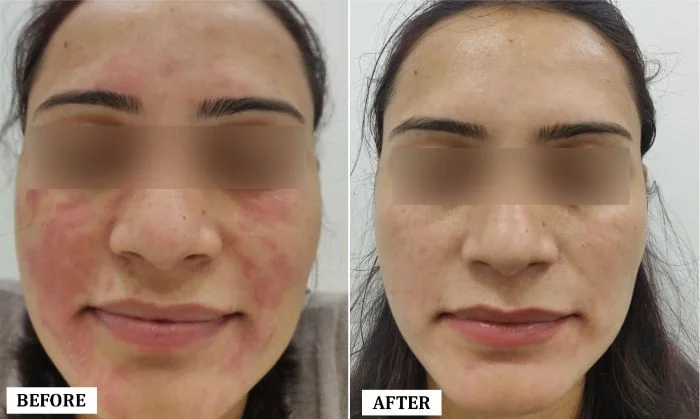What are the different types of stretch marks?
Stretch marks can be categorised into two stages based on appearance and formation. Following are the types of stretch marks discussed in detail by the stretch marks treatment doctor in Noida practising at Skinlogics:
- Striae rubrae: These are initial stage stretch marks. At this stage, signs of inflammation caused by overstretching are most visible, and the affected skin turns pink, red, or violaceous in colour. These marks are distinguished by thicker collagen fibres that have grown more densely packed and are arranged perpendicular or parallel. Such marks may appear flat, but they can also be slightly elevated.
- Striae albae: These are mature or old stretch marks. They appear irregularly shaped, hypo-pigmented, and whitish. Some people may even have a wrinkled texture of these marks. The transition from Striae rubrae to Striae albae is gradual and can take many months to years. It may become more visible with a decline in skin elasticity caused by advancing age.
Other types of stretch marks are:
- Striae gravidarum: These stretch marks arise from pregnancy, usually around the sixth or seventh month of pregnancy. They appear primarily on pregnant women's abdomen, breast, and thigh areas. However, they can also appear on the lower back, upper arms, hips, and buttocks. These are mainly caused by decreased elastin fibres and fibrillin microfibrils (a glycoprotein) in the dermis, which are linked mainly to the physical and physiological changes during pregnancy. Although stretch marks developed during pregnancy fades over time, they do not disappear.
- Striae nigra: These are dark grey or black marks that frequently appear on dark-skinned people.
- Striae caerulea: These are dark blue or purplish marks usually seen in people with a dark complexion.
- Striae atrophicans: These are the stretch marks accompanying thin skin. These may develop in people suffering from Cushing's syndrome due to long-term corticosteroid treatment or after a surgical procedure.
